To celebrate the four-hundredth anniversary of the birth of Rembrandt Harmensz. van Rijn (1606–1669), from July 15 through October 1, 2006 the Morgan Library & Museum presented highlights from its exceptional collection of Rembrandt etchings. Pierpont Morgan laid the foundation for this collection—the finest in North America— when he acquired his first Rembrandt etchings from Theodore Irwin, Sr., in 1900 and George W. Vanderbilt in 1906. Today the Morgan holds impressions of most of the three hundred or so known etchings by Rembrandt as well as multiple, often exceedingly rare impressions of various states. The exhibition showcased some of the most celebrated etchings from the collection along with a few lesser-known and rarely exhibited examples.
Renowned in the history of printmaking, Rembrandt’s etchings are famous for their dramatic intensity, penetrating psychology, and touching humanity. Celebrating his unsurpassed skill and inventiveness as a master storyteller, the exhibition addresses some of the central and often recurring themes of the master’s work, including portraiture, the Bible, scenes from everyday life, the nude, and landscape.
Celebrating Rembrandt opened with a selection of Rembrandt’s early portraits, created mostly while he was still a student in Leiden. His own face was often the focus of these spirited works, primarily exercises in lighting, technique, and, above all, expression. Sensitive renderings of the artist’s own family—his elderly mother; first wife, Saskia; and son, Titus—are also on display. Biblical depictions, the largest and arguably most important category of Rembrandt’s etched work, were also featured.
Subtle shifts in mood and meaning were illustrated in the different states of

Christ Presented to the People
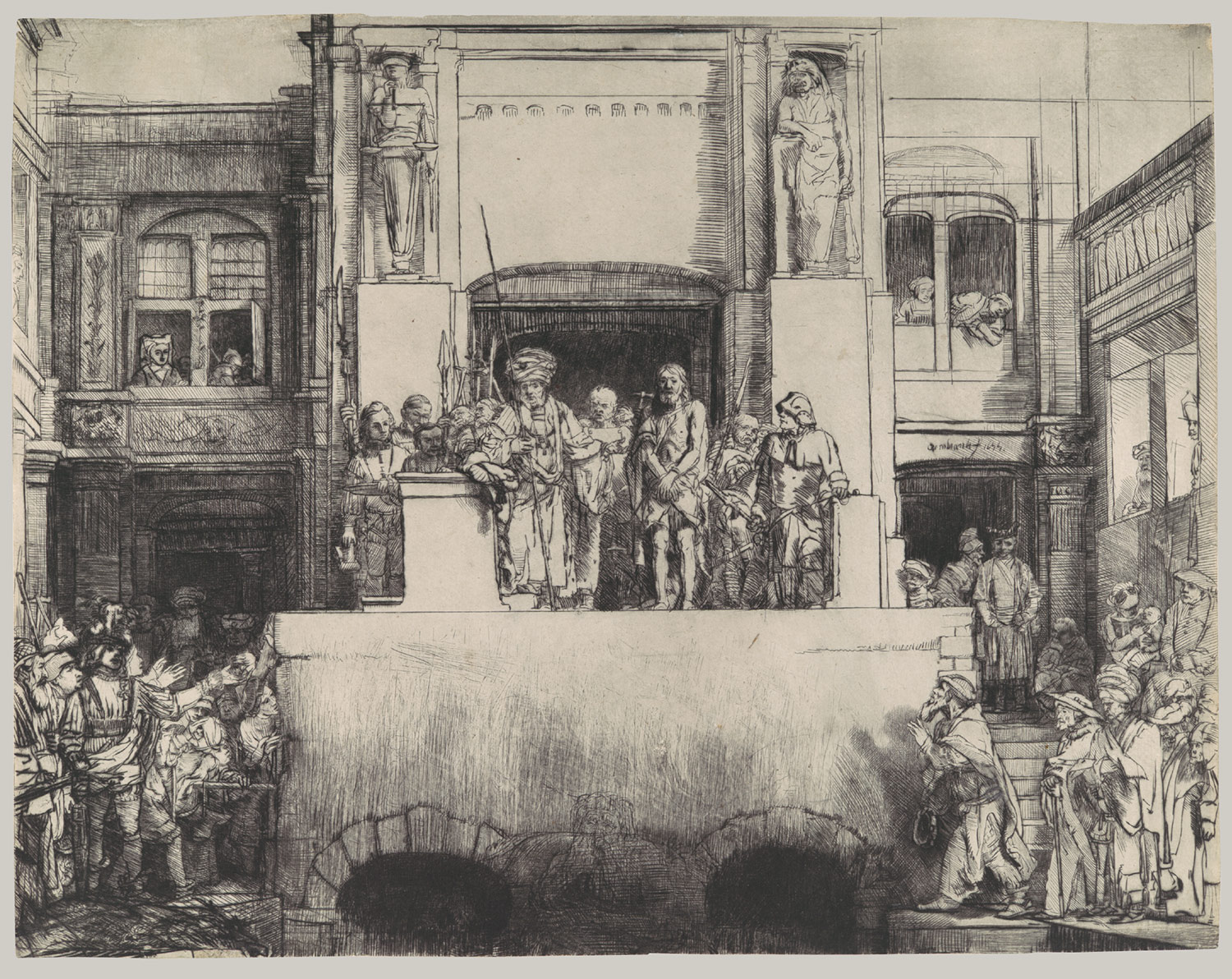
Christ Presented to the People: eighth (final) state
_-_Google_Art_Project.jpg/703px-Rembrandt_Harmensz._van_Rijn_-_Christ_Crucified_Between_the_Two_Thieves_(%22The_Three_Crosses%22)_-_Google_Art_Project.jpg)
and Christ Crucified Between Two Thieves (“The Three Crosses”).
Other key highlights, such as

Adam and Eve,
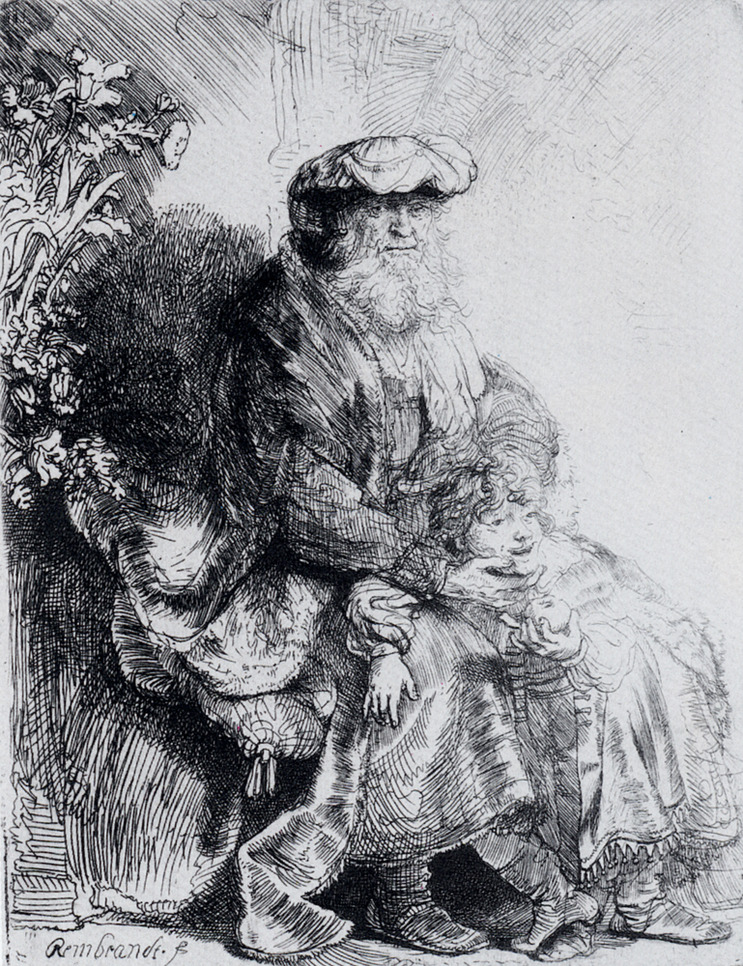
Jacob Caressing Benjamin,

Abraham Entertaining the Angels,

and Abraham’s Sacrifice
demonstrated the unique perspective Rembrandt brought to these biblical accounts.
Also showcased was the Morgan’s pristine impression of one of Rembrandt’s most ambitious compositions,
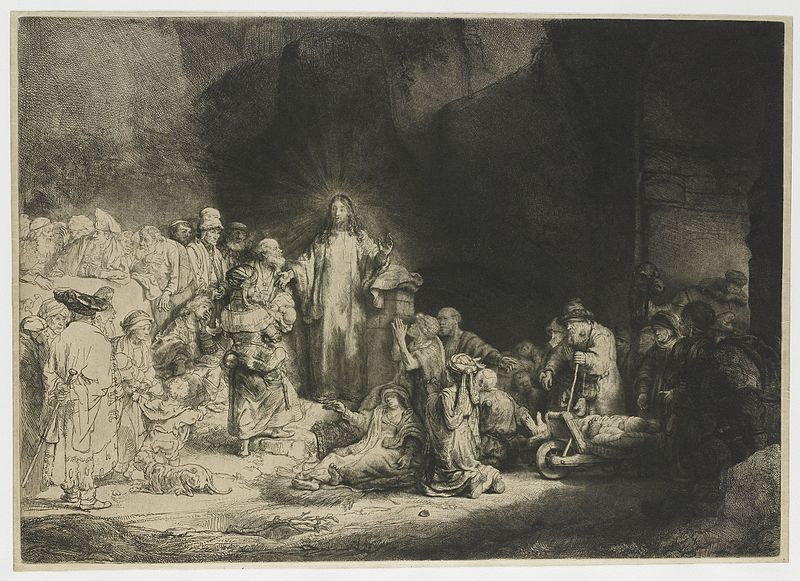
Christ Preaching, popularly known as “The Hundred Guilder Print.”
Rembrandt was fascinated with the social outcast and those on the fringes of Dutch society. Key examples of this genre on view included

Beggar Man and Woman Behind a Bank

and Beggars Receiving Alms at the Door of a House.
Among the depictions of individuals participating in everyday activities were

The Skater
and an example of a more earthy nature,

The Monk in the Cornfield.
In his later years, Rembrandt continued to produce striking, often introspective portraits, such as the

Self-Portrait, Etching at a Window,
of which the Morgan possesses the rare first and second states.
Etchings of friends and contemporaries include
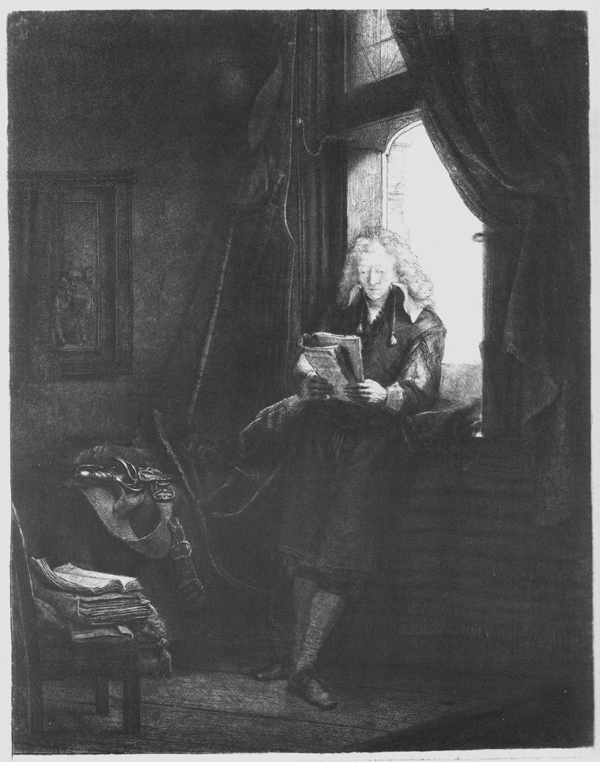
Jan Six,
the Dutch patrician and collector, who is depicted reclining gracefully against a windowsill reading by sunlight.
A section on landscape etchings illustrated how Rembrandt captured the spirit of the Dutch countryside — often inserting charming hidden details — in works such as

The Three Trees, Cottages and Farm Buildings with a Man Sketching,
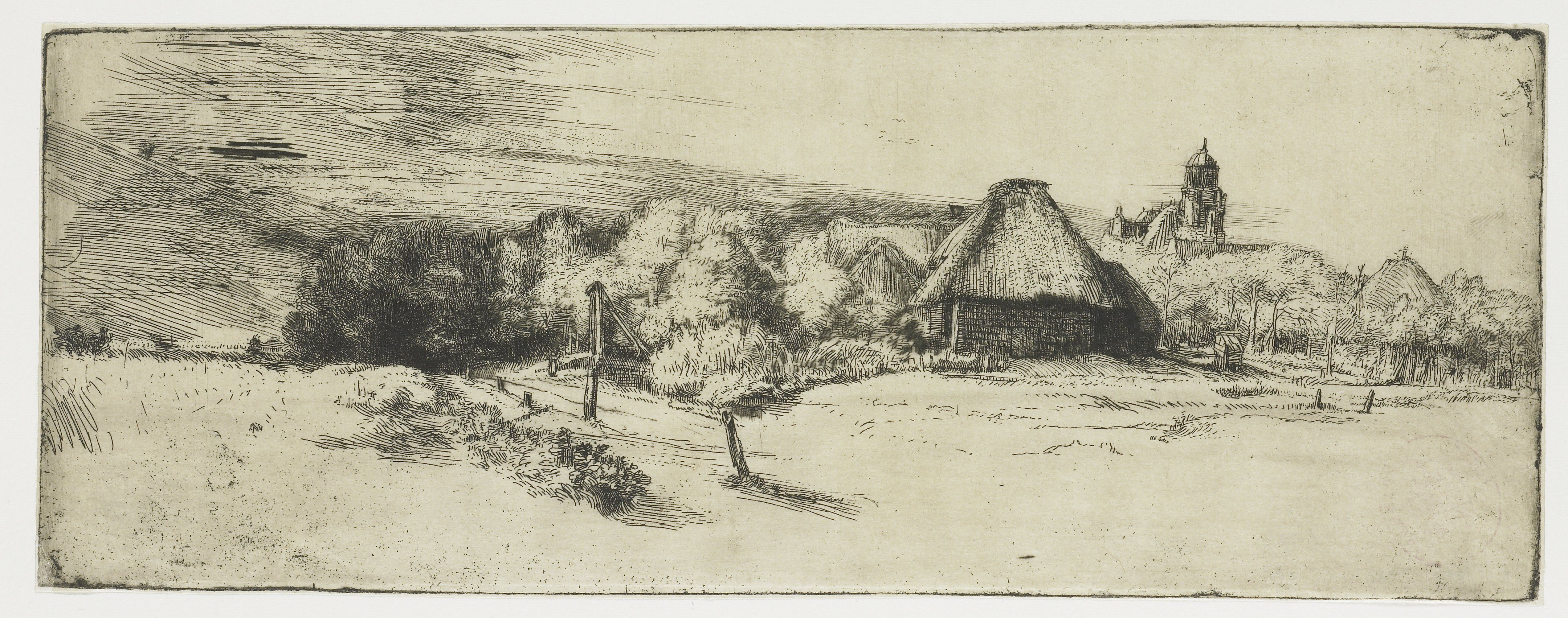
and Landscape with Trees, Farm Buildings, and a Tower.
Celebrating Rembrandt: Etchings from the Morgan was organized by Dr. Anne Varick Lauder, Moore Curatorial Fellow, department of Drawings and Prints, The Morgan Library & Museum.
The exhibition was accompanied by a twenty-page illustrated publication, Collecting Rembrandt: Etchings from the Morgan, by Dr. Anne Varick Lauder. The essay traces the history of the Morgan’s Rembrandt collection, relating some of the stories behind Pierpont Morgan’s first purchases during the American Gilded Age while also showcasing the institution’s important holdings of Rembrandt etchings.
More images from the exhibition:

Rembrandt Harmensz. van Rijn, 1606–1669
Self-Portrait in a Soft Hat and Embroidered Cloak, 1631
Bartsch 7. White and Boon 7. Tenth state of eleven.
Etching
RvR 8. Purchased by Pierpont Morgan in 1900; gift of J. P. Morgan, Jr., 1924

Rembrandt Harmensz. van Rijn, 1606–1669
Self-Portrait with Saskia, 1636
Bartsch 19. White and Boon 19. Third state of three.
Etching
(P) 1949.5. Purchased by Pierpont Morgan in 1900; gift of J. P. Morgan, Jr., 1924

Rembrandt Harmensz. van Rijn, 1606–1669
Saskia with Pearls in Her Hair, 1634
Bartsch 347. White and Boon 347. Only state.
Etching
RvR 461. Purchased by Pierpont Morgan in 1906; gift of J. P. Morgan, Jr., 1924\

Rembrandt Harmensz. van Rijn, 1606–1669
The Great Jewish Bride, 1635
Bartsch 340. White and Boon 340. Fifth state of five.
Etching, with some drypoint and burin
RvR 453. Purchased by Pierpont Morgan in 1906; gift of J. P. Morgan, Jr., 1924

Rembrandt Harmensz. van Rijn, 1606–1669
Abraham Entertaining the Angels, 1656
Bartsch 29. White and Boon 29. Only state.
Etching and drypoint on Japanese paper
RvR 37. Purchased by Pierpont Morgan in 1906; gift of J. P. Morgan, Jr., 1924
Rembrandt Harmensz. van Rijn, 1606–1669
Abraham Casting Out Hagar and Ishmael, 1637
Bartsch 30. White and Boon 30. Only state.
Etching with touches of drypoint
RvR 38. Purchased by Pierpont Morgan in 1906; gift of J. P. Morgan, Jr., 1924
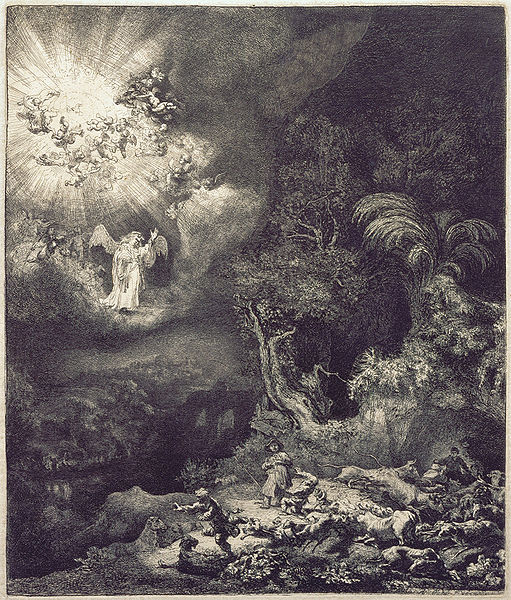
Rembrandt Harmensz. van Rijn, 1606–1669
The Angel Appearing to the Shepherds, 1634
Bartsch 44. White and Boon 44. Third state of three.
Etching, burin, and drypoint
RvR 65. Purchased by Pierpont Morgan in 1906; gift of J. P. Morgan, Jr., 1924
Rembrandt Harmensz. van Rijn, 1606–1669
The Hog, 1643
Bartsch 157. White and Boon 157. First state of two.
Etching and drypoint
RvR 232. Purchased by Pierpont Morgan in 1900; gift of J. P. Morgan, Jr., 1924

Rembrandt Harmensz. van Rijn, 1606–1669
Six’s Bridge, 1645
Bartsch 208. White and Boon 208. Third state of three.
Etching
RvR 294. Purchased by Pierpont Morgan in 1900; gift of J. P. Morgan, Jr., 1924

Rembrandt Harmensz. van Rijn, 1606–1669
Landscape with a View Toward Haarlem (“The Goldweigher’s Field”), 1651
Bartsch 234. White and Boon 234. Only state.
Etching and drypoint
RvR 330. Purchased by Pierpont Morgan in 1906; gift of J. P. Morgan, Jr., 1924

Rembrandt Harmensz. van Rijn, 1606–1669
Self-Portrait in a Cap, 1630
Bartsch 320. White and Boon 320. Only state.
Etching
RvR 442. Purchased by Pierpont Morgan in 1906; gift of J. P. Morgan, Jr., 1924